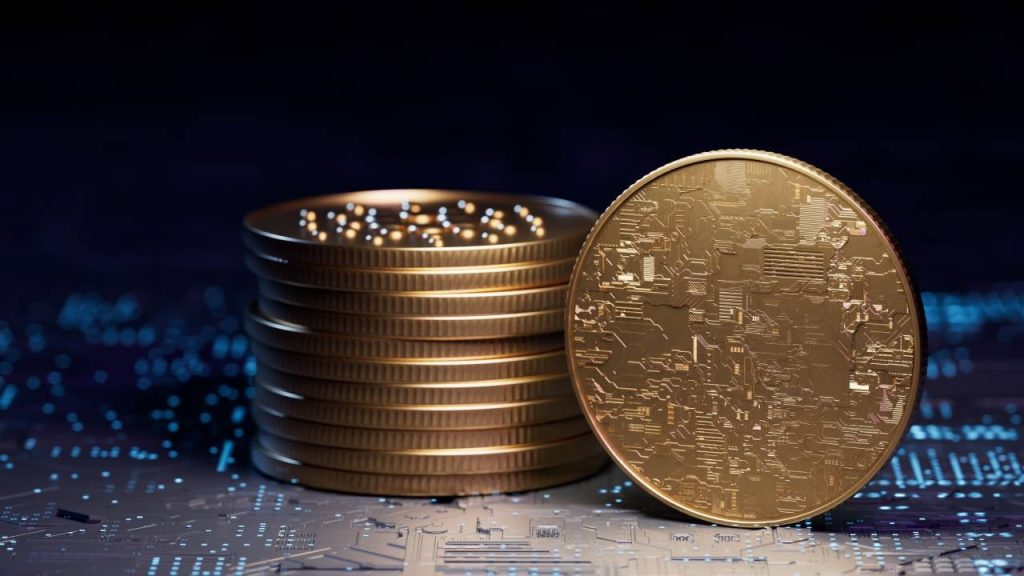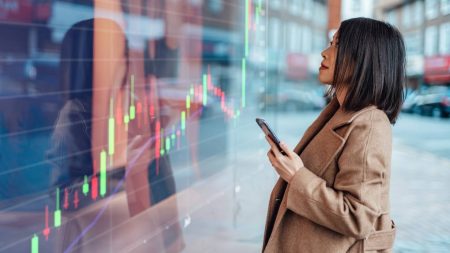Stablecoins have become an essential part of the cryptocurrency ecosystem. Designed to maintain a fixed value, these tokens provide a reliable way for traders to manage risk, reduce transaction fees and even earn passive income.
However, not all stablecoins are created equal, and some carry greater risks than others.
This article dives into the six largest stablecoins on the market, exploring how they work, their unique features and the potential risks involved.
What is a stablecoin?
Stablecoins are a special type of cryptocurrency designed to maintain a fixed value over time. Unlike volatile cryptocurrencies like Bitcoin and Ethereum, stablecoins are pegged to a traditional currency, most commonly the U.S. dollar.
While most stablecoins are backed by assets, a smaller category known as algorithmic stablecoins relies on technical mechanisms, such as adjusting the supply of coins, to keep the price stable. This approach is riskier because it’s more susceptible to market fluctuations and technical failures.
However, fiat-backed stablecoins, which are backed by real-world assets, currently dominate the market. Tether’s USDT and Circle’s USDC, the two largest stablecoins, collectively account for more than $167 billion in market cap.
Issuers of fiat-backed stablecoins often establish a reserve fund holding real-world assets. So if a stablecoin is backed by the U.S. dollar, the issuer might hold $100 million to support 100 million stablecoins. When a user wants to redeem their stablecoin, the issuer can draw from this reserve to provide the equivalent amount of fiat currency.
Stablecoins have become an essential tool in the cryptocurrency ecosystem, offering several key benefits:
- Reduced transaction fees: Many cryptocurrency exchanges skip the fees for users converting to or from stablecoins. So instead of cashing out into U.S. dollars (and racking up fees each time), traders can park their funds in stablecoins right on the exchange. This lets them wait out market dips or jump on a rally without losing any purchasing power in the process.
- Hedging against volatility: By holding stablecoins, traders can protect their investments from the price swings inherent in the crypto market.
- Passive income opportunities: Some stablecoins allow users to earn interest through staking or lending. For example, Coinbase offered a 4.7 percent reward to users who held USDC on the platform in November 2024.
6 largest stablecoins in the world
Here are the six largest stablecoins by market cap size.
Data as of Nov. 20, 2024, from CoinMarketCap.
Tether (USDT)
Market cap: $128.87 billion
Tether is often hailed as the first successful stablecoin. With $125 billion in assets as of September 2024 — mostly low-risk U.S. Treasury bills, plus some Bitcoin and gold — Tether is a financial heavyweight. In 2023, it brought in $6.2 billion in profit, surpassing even BlackRock, the world’s largest asset manager. By September 2024, Tether’s year-to-date profits topped $7.7 billion.
Tether Holdings, the company behind Tether, issues coins to a select group of direct customers, mostly trading firms. These clients wire real U.S. dollars to Tether, which are then used to purchase assets, mainly U.S. Treasuries, to back the value of the coins.
Once in circulation, Tether can be traded for other cryptocurrencies through exchanges and brokerages.
Tether’s stability was put to the test in May 2022, a key moment in the history of stablecoins. The crash of Terra’s UST, the third-largest stablecoin at the time, triggered a wave of panic selling that briefly broke Tether’s peg, dropping its value to 92 cents on some exchanges. By June 2002, it had rebounded to around 99 cents, and on July 20, 2022, Tether fully regained its dollar peg.
USDC (USDC)
Market cap: $37.89 billion
USDC is a stablecoin pegged to the U.S. dollar, and it operates on multiple blockchains, including Ethereum. It’s managed by Circle, a financial technology company. USDC’s stability is ensured by a reserve of U.S. dollars, where each USDC token is backed by a corresponding dollar held with verified partners, often financial institutions.
To create new USDC, users deposit U.S. dollars with Circle, which then issues an equivalent amount of USDC tokens on the blockchain. This process ensures every USDC in the market is backed by a real U.S. dollar.
While initially managed by a consortium called Centre, co-founded by Coinbase and Circle, Circle has since assumed sole responsibility for the management of USDC. However, Coinbase still maintains a minority stake in Circle.
Dai (DAI)
Market cap: $5.37 billion
Dai is a decentralized stablecoin operating on the Ethereum blockchain. It aims to maintain a stable value of one U.S. dollar through the use of smart contracts and a decentralized autonomous organization (DAO) known as MakerDAO.
Unlike centralized stablecoins like Tether, Dai’s issuance and management are decentralized, with no one entity controlling the process. Users can deposit different cryptocurrencies as collateral into smart contracts, which then mint DAI tokens. These collateralized assets help maintain DAI’s peg to the U.S. dollar.
Dai’s model has evolved over time. Initially, it relied primarily on Ethereum as collateral. More recently, it has expanded its collateral base to include USDC and real-world assets like U.S. Treasury bills.
While supporters say this diversification helps bolster Dai’s stability, it’s also generated criticism from some in the crypto community who advocate for a purely decentralized approach.
First Digital USD (FDUSD)
Market cap: $2.46 billion
First Digital USD is a stablecoin issued by FD121 Limited, a subsidiary of First Digital Limited, a Hong Kong-based financial firm. Launched in June 2023, First Digital USD is designed to be backed by one U.S. dollar or equivalent assets.
First Digital Trust Limited is governed by Hong Kong law, and it’s responsible for keeping FDUSD reserves in different accounts, ensuring they remain separate from the firm’s other assets. These reserves are required to be held in cash or highly liquid assets.
A unique feature of FDUSD is its programmability. This allows the stablecoin to execute smart contracts, facilitating escrow and insurance services without the need for intermediaries.
USDD (USDD)
Market cap: $766.53 million
USDD was launched in May 2022 on the TRON blockchain and is also available on Ethereum, BNB Chain and other networks. Spearheaded by TRON founder Justin Sun and the TRON DAO, this token is designed to be a decentralized alternative to traditional fiat currencies and centralized stablecoins.
USDD is an algorithmic stablecoin. It relies on market incentives and arbitrage rather than a fully-backed reserve model like Tether or USDC. For example, USDD’s value is maintained through the burning or minting of TRX, TRON’s native cryptocurrency, to manage supply and demand.
While USDD incorporates a hybrid backing model in an attempt to mitigate risks, its algorithmic nature raises questions about its stability during market turbulence.
PayPal USD (PYUSD)
Market cap: $512.51 million
Launched in 2023, PayPal USD stands apart from other stablecoins on this list. It’s backed 1:1 by U.S. dollars and issued by the reputable Paxos Trust Company, a U.S.-regulated custodian. It’s also the first stablecoin issued by a major U.S. financial services company, bringing established trust and wider accessibility to the table.
PayPal USD is fully backed by a mix of U.S. dollar deposits, short-term U.S. Treasurys and cash equivalents, ensuring its peg to the dollar.
PayPal is actively attempting to expand PYUSD’s reach. It worked with Anchorage Digital, a regulated crypto platform, to establish a rewards program for users who hold PayPal USD. And in May 2024, PayPal USD launched on the Solana blockchain, working in collaboration with Crypto.com, Phantom and Paxos to onboard users onto the network.
Despite recent successes, PayPal USD is still dwarfed by other stablecoins on this list, like Tether and USDC. However, its backing by a trusted financial institution positions it well for future growth.
Are stablecoins safe?
At first, stablecoins might seem like a low-risk investment compared to volatile cryptocurrencies. However, their safety depends heavily on their design, backing and regulatory environment. In short, some stablecoins are safer than others.
Fiat-backed stablecoins such as Tether and USDC are considered safer than some other stablecoins because they’re backed by reserves of cash or government bonds.
Meanwhile, crypto-backed stablecoins, such as Dai, maintain their dollar peg by using overcollateralized cryptocurrencies locked in smart contracts, making them vulnerable to the volatility of the underlying assets and technical flaws in the smart contracts.
Perhaps the riskiest type of stablecoin is algorithmic stablecoins like USDD, which rely on market incentives and algorithms to maintain their value, but aren’t backed by real assets.
TerraUSD, once the third-largest stablecoin by market cap, is a stark example of the pitfalls of algorithmic stablecoins. TerraUSD relied on a complex system of arbitrage and other cryptocurrencies to maintain its 1:1 peg to the U.S. dollar.
However, in 2022, a sudden crash eroded confidence in the system, leading to a catastrophic collapse. As investors panicked and sold off their TerraUSD tokens, the price plummeted, and the peg broke and never recovered.
Sufficient reserves ensure that stablecoins can maintain their peg even during periods of market volatility. Without backing, a stablecoin can fall victim to runs, in which investors rush to redeem their tokens, potentially toppling the entire system.
Bottom line
Stablecoins offer a way to participate in the crypto ecosystem without experiencing the wild price swings. However, not all stablecoins are created equal. While diversification is important in investing, the average investor is likely better off sticking with the two largest stablecoins by market cap — Tether and USDC — given these tokens are backed by real-world assets.
Editorial Disclaimer: All investors are advised to conduct their own independent research into investment strategies before making an investment decision. In addition, investors are advised that past investment product performance is no guarantee of future price appreciation.
Read the full article here










